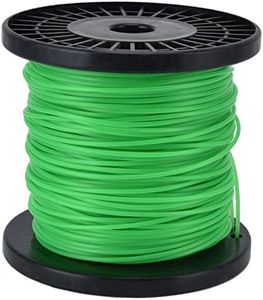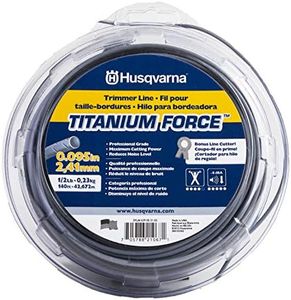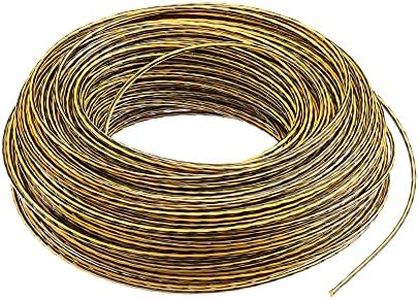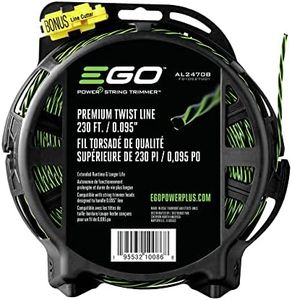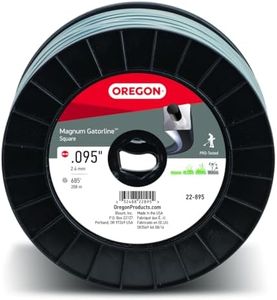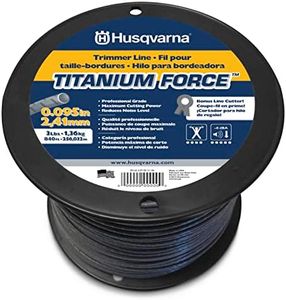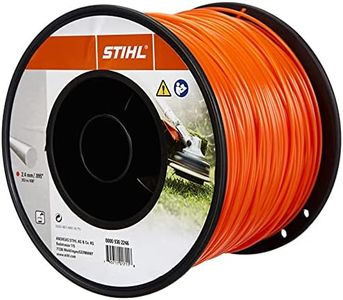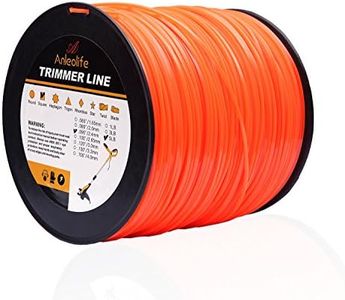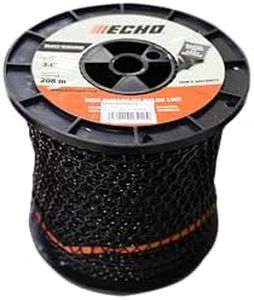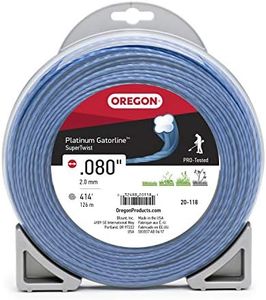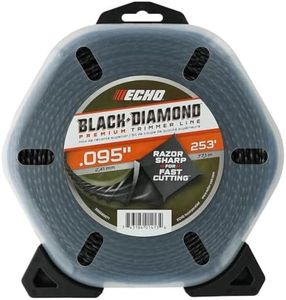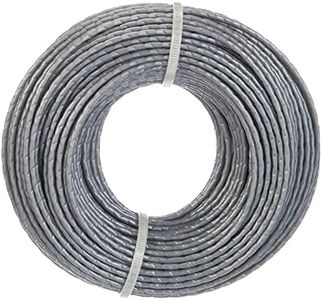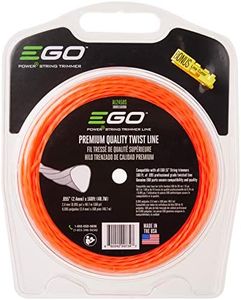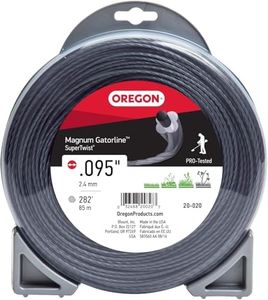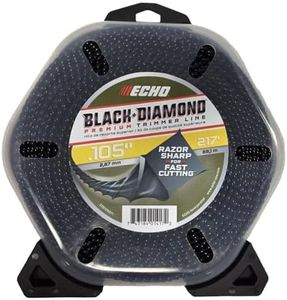We Use CookiesWe use cookies to enhance the security, performance,
functionality and for analytical and promotional activities. By continuing to browse this site you
are agreeing to our privacy policy
10 Best string trimmer lines
From leading brands and best sellers available on the web.Buying Guide for the Best string trimmer lines
Choosing the right string trimmer line can make your yard work more efficient, safer, and even extend the life of your trimmer. The line you select will affect how well you tackle different types of grass and weeds, how often you need to replace it, and how easy it is to use your trimmer. When picking a trimmer line, look closely at the key features to match your needs, yard size, and type of vegetation you commonly work with.Line DiameterLine diameter refers to how thick the string trimmer line is. This is important because a thicker line is generally more durable and can cut through tougher vegetation like thick weeds or dense grass, while a thinner line is best for lighter, precision trimming around lawns and flower beds. Trimmer lines usually range from around 0.065 inches for light duty work, 0.080 to 0.095 inches for general home use, and above 0.095 inches for heavy-duty or commercial use. If you mostly trim grass and have a small yard, go for a thinner line. If you regularly battle thick weeds or have a large area, a thicker line is a better fit. Always check what your trimmer can handle, as not all machines can take all thicknesses.
Line ShapeTrimmer lines come in different shapes such as round, twisted, square, or star-shaped. The shape affects how efficiently the line cuts and how easily it breaks. Round lines are the most common and are great for general lawn maintenance as they're easy to install and less likely to break. Twisted and serrated lines provide extra cutting power and are better for tougher tasks or thicker vegetation. Square and star-shaped lines create a sharper edge for cleaner cuts but can wear out a bit faster. Pick a shape based on your typical trimming jobs: stick with round for general lawn trimming, or try twisted or edged shapes if you're battling tough, overgrown areas.
MaterialMost trimmer lines are made from nylon, but blends are available with added polymers or reinforced materials for extra strength. Standard nylon is flexible, affordable, and does well for regular yard work. However, if you have a lot of thick weeds or tough trimming jobs, consider a reinforced line as these can handle tougher environments without breaking as easily. The right material for you depends on how heavy your yard work usually is: choose basic nylon for light to moderate work and reinforced lines for heavy-duty needs.
Line Length (Refill Amount)Line length tells you how much trimmer line comes in a package. It typically comes in pre-cut lengths, coils, or large spools. If you only do occasional trimming, a small pre-cut package could be enough. If you trim often or have a large lawn, buying more line at once (such as a large spool) can save you from frequent repurchasing and running out during projects. Your usage frequency and lawn size should guide how much you buy—get enough to avoid interruptions, but don't overbuy if your trimming needs are light.
CompatibilityDifferent trimmers accept different line sizes, shapes, and feeding methods (manual, bump, or automatic feed). Always check your trimmer’s manual for compatible line dimensions and types before buying. Using the wrong line can damage the trimmer or reduce its performance. Pick a trimmer line that matches your machine’s recommended size and type to keep everything running smoothly and to avoid frustration during your yardwork.
